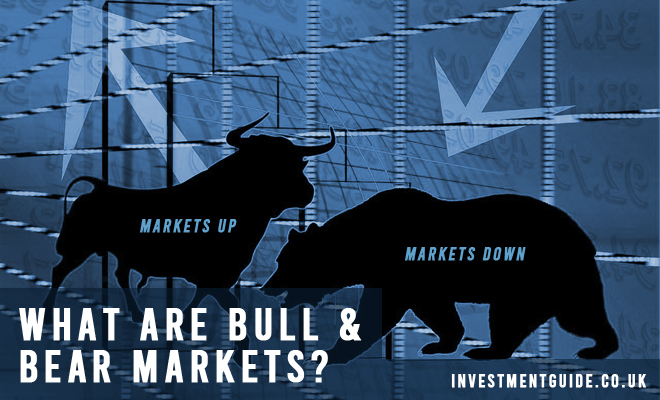People refer to the stock market as a ‘bull market’ where share prices have been rising consistently over a period of time. Conversely, a bear market is the opposite, where the stock market has consistently decreased for a period of time.
On a related note, a ‘bullish’ investor is one who believes a share price (or the market) will rise, whereas a ‘bearish’ investor believes a share price (or the market) will fall.
A bear market is typically announced where the market has moved downwards by 20 percent between quarters. It should not be confused with a ‘stock market correction’ which is typically where the stock market falls by 10%. Whereas corrections are typically short lived, bear markets can be longer lasting. The longest bear market, The Great Depression, occurred between March 1937 and April 1942 (61 months).
As always, human psychology plays a big part in stock market price movements. Investors are either optimistic or pessimistic. In a bull market, optimism dominates. People believe that the market will continue its growth spree and do not want to miss out on the capital gains that they see others making. In a bear market, pessimism takes over. People are less willing to invest as there is no certainty as to when the market will turnaround.
People are scared to invest at this point in case the market drops further. Further, many investors choose to liquidate their holdings to get access to cash to either hold or move into investments perceived to be lower risk. This sell-off often results in prices dropping further and many investors realise losses, hindering their long term financial goals.
However, other investors may remain bullish on long term prospect and may be willing to ‘buy the dip’. By doing so, it is possible to capitalize on bearish investors emotions by purchasing high quality stocks at low prices and selling at higher prices when markets have recovered.
Bull and bear market strategies
Throughout a lifetime of investment opportunity, you are bound to see multiple bull and bear markets. However, as stock markets are typically expected to rise over time, it follows that bull markets tend to be both longer and more frequent than bear markets. One strategy to ensure you benefit from this long term growth is pound cost averaging (also known as dollar cost averaging).
Bull and bear market drivers
A ‘bull market’ can be caused by a number of drivers. However, the central theme is that there is confidence in the economies ability to perform and grow.
For example, two key drivers are reports of strong economic growth and low unemployment rates. Other factors might include price history, seasonal factors, and national or world events.
Conversely a bear market arises where there is little confidence in economic performance or growth. The majority of investors believe that share prices will remain subdued or decrease.
Where did the ‘bull’ and ‘bear’ terminology come from?
Both bull and bear markets are named after the attacking styles of the respective animals. Whereas a bear swipes downwards when attacking prey, bulls thrust their horns upwards.


